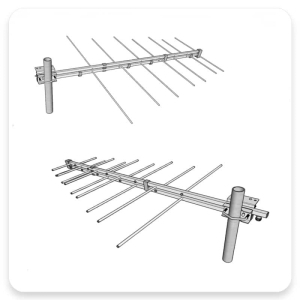STL Link Antennas
STL (Studio Transmitter Link) antennas are specialized antennas used in broadcasting to establish a reliable communication link between a studio and a transmitter site. These antennas facilitate the transmission of audio signals from the studio to the transmitter.
Allowing broadcasters to remotely control and monitor their broadcasting equipment.
STL antennas are designed to operate within specific frequency bands, typically in the VHF or UHF range. Of course this depends on the requirements of the broadcasting system. They are often directional antennas, meaning they radiate and receive signals primarily in one direction, optimizing signal strength and minimizing interference.
The primary function of STL antennas is to ensure the seamless transmission of audio signals from the studio to the transmitter site. They play a crucial role in maintaining the integrity and quality of the broadcast signal.
Enabling broadcasters to deliver clear and reliable audio content to their audience.
Also STL antennas are commonly installed on towers or antenna masts at both the studio and transmitter locations. They are constructed with durable materials to withstand harsh weather conditions and environmental factors, ensuring consistent performance over extended periods.
So STL antennas are essential components of broadcasting infrastructure. Providing broadcasters with the means to establish robust communication links between their studio and transmitter sites, thereby enabling the delivery of high-quality audio content to listeners.
Showing all 5 results

